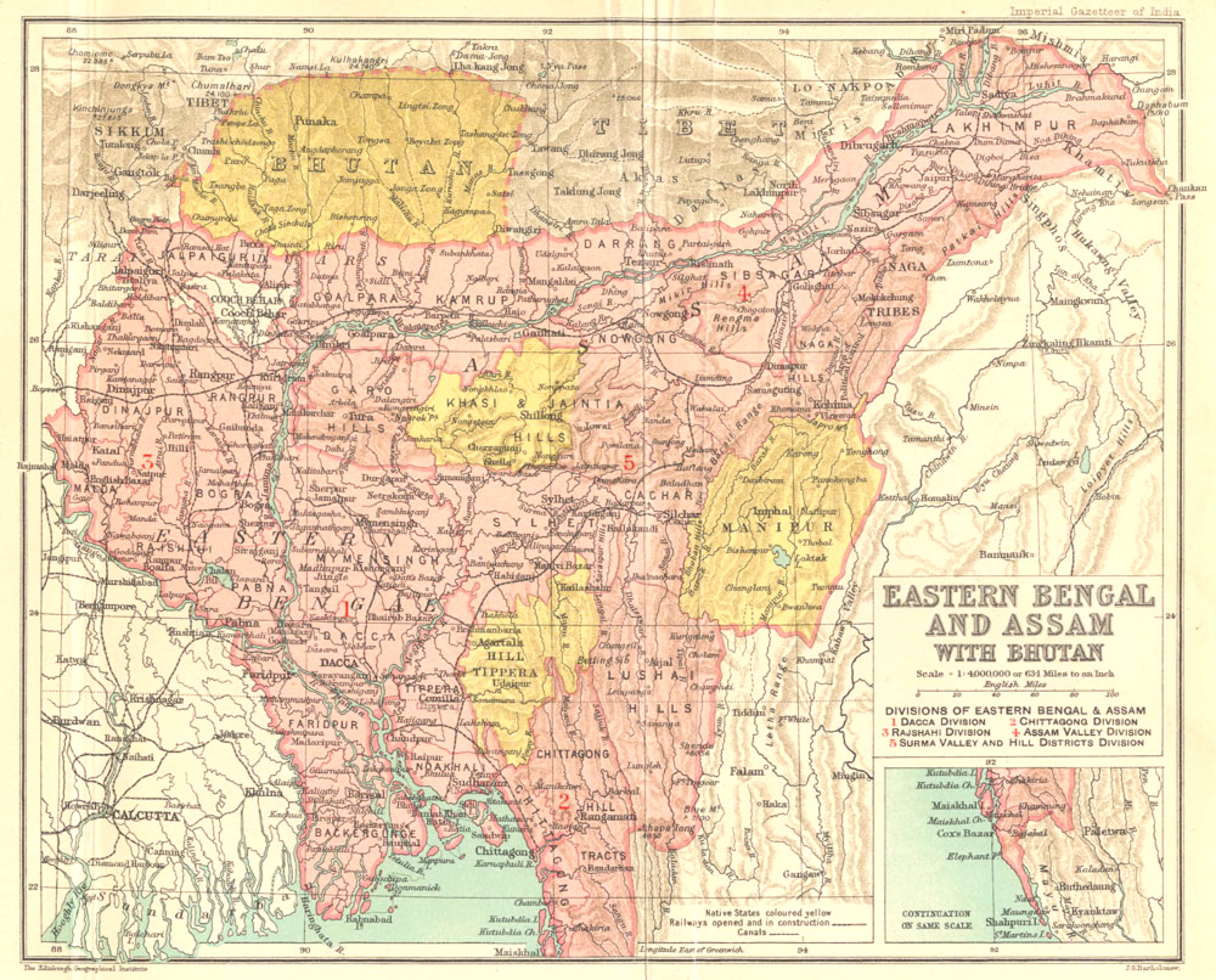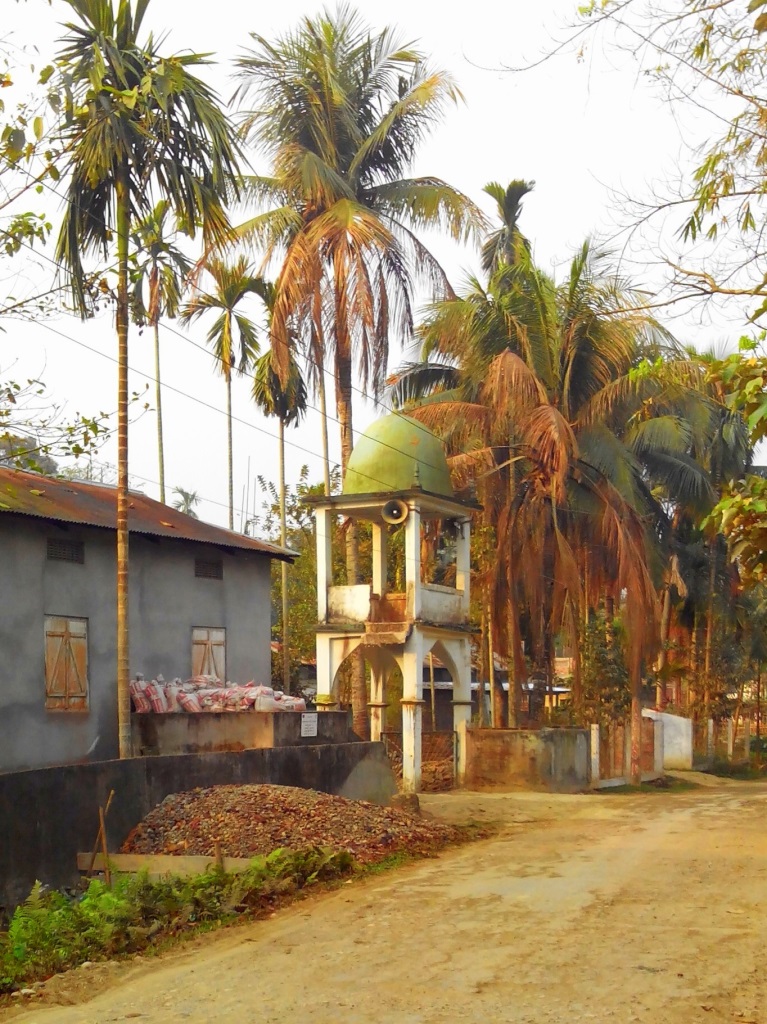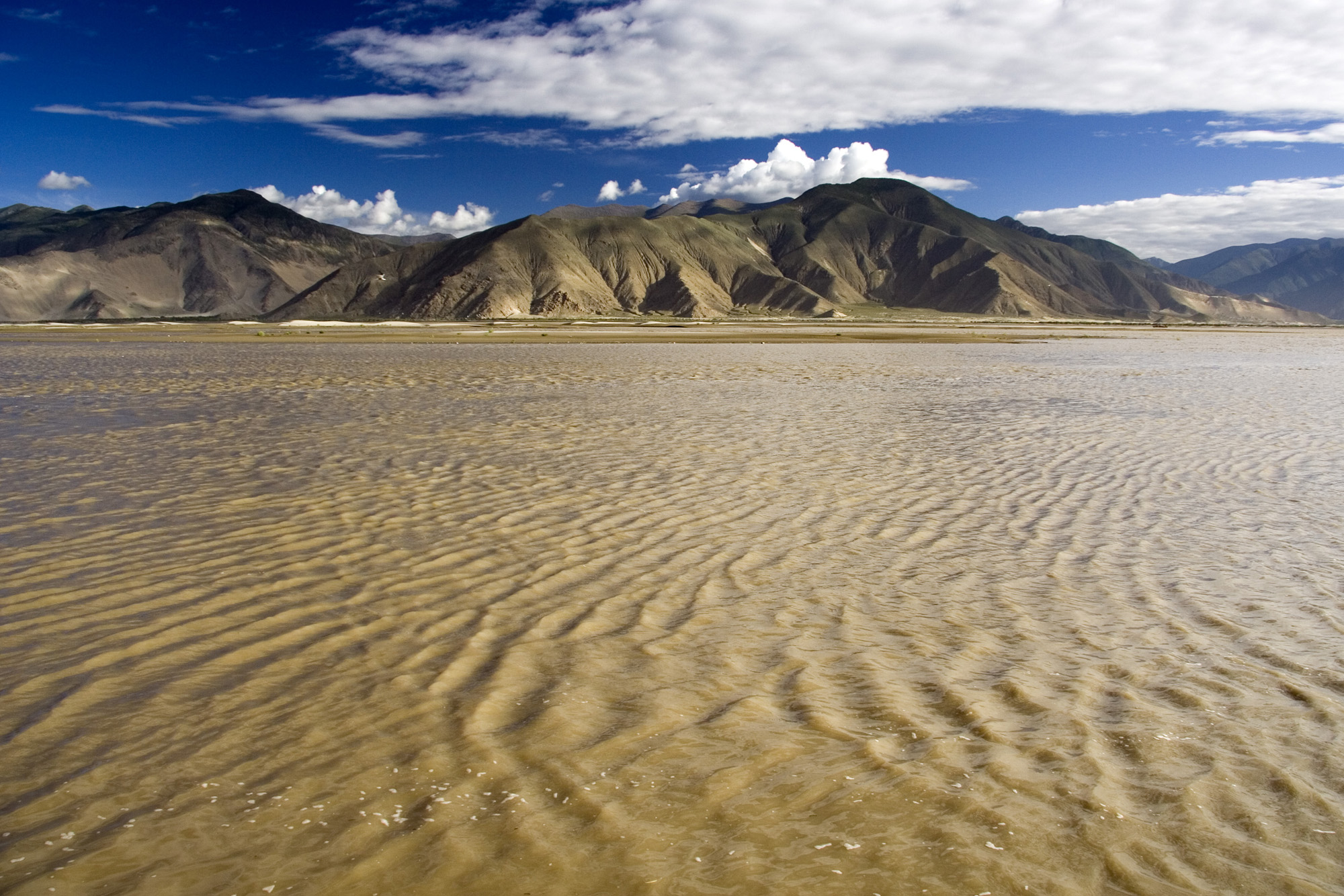|
Kulsi River
The Kulsi River is a tributary of the Brahmaputra River in the Indian state of Assam. The river originates from West Khasi Hills of Meghalaya. The Kulsi river is known as Khir River in its origin. After travelling 12 km in Meghalaya, this river then flows through Kamrup district of Assam and is known as Kulsi. The confluence of the Kulsi river with Brahmaputra River is at Nagarbera of Kamrup district, Assam. Habitat of Dolphin The Kulsi river is the habitat of endangered South Asian river dolphin (''Platanista gangetica''). This endangered dolphin (known as ''Xihu'' in Assamese language) breeds only in Subansiri River The Subansiri River; is a trans- Himalayan river and a tributary of the Brahmaputra River that flows through Tibet's Lhünzê County, Shannan Prefecture and the Indian states of Arunachal Pradesh and Assam. The Subansiri is long, with a drain ... and Kulsi River of the entire Brahmaputra delta. However, sand mining and other development activities make d ... [...More Info...] [...Related Items...] OR: [Wikipedia] [Google] [Baidu] |
South Asian River Dolphin
South Asian river dolphins are toothed whales in the genus ''Platanista'', which inhabit fresh water habitats in the northern Indian subcontinent. They were historically considered to be one species (''P. gangetica'') with the Ganges river dolphin and the Indus river dolphin being subspecies (''P. g. gangetica'' and ''P. g. minor'' respectively). Genetic and morphological evidence in 2021 has shown them to be separate species. The Ganges and Indus river dolphins are estimated to have diverged 550,000 years ago. They are the only living members of the family Platanistidae and the superfamily Platanistoidea. Fossils of ancient relatives date to the late Oligocene. South Asian river dolphins are small but stocky cetaceans with long snouts or rostra, broad flippers, and small dorsal fins. They have several unusual features. Living in murky river waters, their eyes are tiny and lensless, relying instead on echolocation for navigation. The skull has large crests over the melon, ... [...More Info...] [...Related Items...] OR: [Wikipedia] [Google] [Baidu] |
Assam
Assam (; ) is a state in northeastern India, south of the eastern Himalayas along the Brahmaputra and Barak River valleys. Assam covers an area of . The state is bordered by Bhutan and Arunachal Pradesh to the north; Nagaland and Manipur to the east; Meghalaya, Tripura, Mizoram and Bangladesh to the south; and West Bengal to the west via the Siliguri Corridor, a wide strip of land that connects the state to the rest of India. Assamese language, Assamese and Boro language (India), Boro are the official languages of Assam, while Bengali language, Bengali is an additional official language in the Barak Valley. Assam is known for Assam tea and Assam silk. The state was the first site for Oil well, oil drilling in Asia. Assam is home to the one-horned Indian rhinoceros, along with the wild water buffalo, pygmy hog, tiger and various species of Asiatic birds, and provides one of the last wild habitats for the Asian elephant. The Economy of Assam, Assamese economy is aided by w ... [...More Info...] [...Related Items...] OR: [Wikipedia] [Google] [Baidu] |
Kamrup District
Kamrup Rural district, or simply Kamrup district (Pron: ˈkæmˌrəp or ˈkæmˌru:p), is an administrative district in the state of Assam in India formed by dividing the old Kamrup district into two in the year 2003; other being Kamrup Metropolitan district, named after the region it constitutes. This district, along with Nalbari, Barpeta, Kamrup Metropolitan, Bajali and Baksa district Baksa district ( or ) is an administrative district in the Bodoland Territorial Region of Assam, one of the North-Eastern states of India. The administrative headquarters is at Mushalpur. Manas National Park is a part of this district. His ...s has been created from the Undivided Kamrup district. History Kamrup Rural district was created by bifurcating Undivided Kamrup district in 2003. The Government of Assam, during the Chief-ministership of Late Tarun Gogoi, had proposed to bifurcate it further and create a new district, named South Kamrup. In 2016, the process of creation of ... [...More Info...] [...Related Items...] OR: [Wikipedia] [Google] [Baidu] |
West Khasi Hills
West Khasi Hills is an administrative district in the state of Meghalaya in India. History The West Khasi Hills district was carved out of the Khasi Hills district, which was divided into West and East Khasi Hills districts on 28 October 1976. Geography The district headquarters is located at Nongstoin. The district occupies an area of 5247 km2 Divisions Administrative divisions West Khasi Hills district is divided into four blocks: Demographics According to the 2011 census West Khasi Hills district has a population of 383,461, roughly equal to the nation of Maldives. This gives it a ranking of 562th in India (out of a total of 640). The district has a population density of . Its population growth rate over the decade 2001-2011 was 30.25%. West Khasi Hills has a sex ratio of 980 females for every 1000 males, and a literacy rate of 77.87%. The district is predominantly inhabited by Khasi tribe. There is a significance presence of Garo Tribe in the Mawshy ... [...More Info...] [...Related Items...] OR: [Wikipedia] [Google] [Baidu] |
Meghalaya
Meghalaya (, or , meaning "abode of clouds"; from Sanskrit , "cloud" + , "abode") is a state in northeastern India. Meghalaya was formed on 21 January 1972 by carving out two districts from the state of Assam: (a) the United Khasi Hills and Jaintia Hills and (b) the Garo Hills.History of Meghalaya State Government of India Meghalaya was previously part of Assam, but on 21 January 1972, the districts of Khasi, Garo and Jaintia Hills became the new state of Meghalaya. The population of Meghalaya as of 2014 is estimated to be 3,211,474. Meghalaya covers an area of approximately 22,430 square kilometres, with a length-to-breadth ratio of about 3:1.Meghalaya IBEF, India (2013) T ... [...More Info...] [...Related Items...] OR: [Wikipedia] [Google] [Baidu] |
Brahmaputra River
The Brahmaputra is a trans-boundary river which flows through Tibet, northeast India, and Bangladesh. It is also known as the Yarlung Tsangpo in Tibetan, the Siang/Dihang River in Arunachali, Luit in Assamese, and Jamuna River in Bangla. It is the 9th largest river in the world by discharge, and the 15th longest. With its origin in the Manasarovar Lake region, near Mount Kailash, on the northern side of the Himalayas in Burang County of Tibet where it is known as the Yarlung Tsangpo River, It flows along southern Tibet to break through the Himalayas in great gorges (including the Yarlung Tsangpo Grand Canyon) and into Arunachal Pradesh. It flows southwest through the Assam Valley as the Brahmaputra and south through Bangladesh as the Jamuna (not to be confused with the Yamuna of India). In the vast Ganges Delta, it merges with the Ganges, popularly known as the Padma in Bangladesh, and becomes the Meghna and ultimately empties into the Bay of Bengal. About lo ... [...More Info...] [...Related Items...] OR: [Wikipedia] [Google] [Baidu] |
Kamrup District
Kamrup Rural district, or simply Kamrup district (Pron: ˈkæmˌrəp or ˈkæmˌru:p), is an administrative district in the state of Assam in India formed by dividing the old Kamrup district into two in the year 2003; other being Kamrup Metropolitan district, named after the region it constitutes. This district, along with Nalbari, Barpeta, Kamrup Metropolitan, Bajali and Baksa district Baksa district ( or ) is an administrative district in the Bodoland Territorial Region of Assam, one of the North-Eastern states of India. The administrative headquarters is at Mushalpur. Manas National Park is a part of this district. His ...s has been created from the Undivided Kamrup district. History Kamrup Rural district was created by bifurcating Undivided Kamrup district in 2003. The Government of Assam, during the Chief-ministership of Late Tarun Gogoi, had proposed to bifurcate it further and create a new district, named South Kamrup. In 2016, the process of creation of ... [...More Info...] [...Related Items...] OR: [Wikipedia] [Google] [Baidu] |
Tributary
A tributary, or affluent, is a stream or river that flows into a larger stream or main stem (or parent) river or a lake. A tributary does not flow directly into a sea or ocean. Tributaries and the main stem river drain the surrounding drainage basin of its surface water and groundwater, leading the water out into an ocean. The Irtysh is a chief tributary of the Ob river and is also the longest tributary river in the world with a length of . The Madeira River is the largest tributary river by volume in the world with an average discharge of . A confluence, where two or more bodies of water meet, usually refers to the joining of tributaries. The opposite to a tributary is a distributary, a river or stream that branches off from and flows away from the main stream. PhysicalGeography.net, Michael Pidwirny ... [...More Info...] [...Related Items...] OR: [Wikipedia] [Google] [Baidu] |
Assamese Language
Assamese (), also Asamiya ( ), is an Indo-Aryan language spoken mainly in the north-east Indian state of Assam, where it is an official language, and it serves as a ''lingua franca'' of the wider region. The easternmost Indo-Iranian language, it has over 23 million speakers. Nefamese, an Assamese-based pidgin, is used in Arunachal Pradesh, and Nagamese, an Assamese-based Creole language, is widely used in Nagaland. The Kamtapuri language of Rangpur division of Bangladesh and the Cooch Behar and Jalpaiguri districts of India are linguistically closer to Assamese, though the speakers identify with the Bengali culture and the literary language. In the past, it was the court language of the Ahom kingdom from the 17th century. Along with other Eastern Indo-Aryan languages, Assamese evolved at least before the 7th century CE from the middle Indo-Aryan Magadhi Prakrit. Its sister languages include Angika, Bengali, Bishnupriya Manipuri, Chakma, Chittagonian, Hajong, ... [...More Info...] [...Related Items...] OR: [Wikipedia] [Google] [Baidu] |
Subansiri River
The Subansiri River; is a trans- Himalayan river and a tributary of the Brahmaputra River that flows through Tibet's Lhünzê County, Shannan Prefecture and the Indian states of Arunachal Pradesh and Assam. The Subansiri is long, with a drainage basin . It is the largest tributary of the Brahmaputra contributing 7.92% of the Brahmaputra's total flow. Name and etymology The name is derived from a Sanskrit word ''svarṇa'' (), meaning 'gold'. Originally the name applied to the river only after the confluence of the Chayul Chu and Tsari Chu rivers at Gelensiniak. In early maps of independent India, Tsari Chu was marked as the main Subansiri river. However, over time, the name has been transferred to Chayul Chu. Within Tibet, the rivers are named after the locations they flow from such as Loro Chu, Nye Chu, Char Chu and Chayul Chu, all of which apply to the Subansirir or its tributaries. Course The Subansiri River originates in the Himalayas near Mount Porom in the Tibet. ... [...More Info...] [...Related Items...] OR: [Wikipedia] [Google] [Baidu] |
Rivers Of Assam
A river is a natural flowing watercourse, usually freshwater, flowing towards an ocean, sea, lake or another river. In some cases, a river flows into the ground and becomes dry at the end of its course without reaching another body of water. Small rivers can be referred to using names such as creek, brook, rivulet, and rill. There are no official definitions for the generic term river as applied to geographic features, although in some countries or communities a stream is defined by its size. Many names for small rivers are specific to geographic location; examples are "run" in some parts of the United States, "burn" in Scotland and northeast England, and "beck" in northern England. Sometimes a river is defined as being larger than a creek, but not always: the language is vague. Rivers are part of the water cycle. Water generally collects in a river from precipitation through a drainage basin from surface runoff and other sources such as groundwater recharge, springs, ... [...More Info...] [...Related Items...] OR: [Wikipedia] [Google] [Baidu] |








